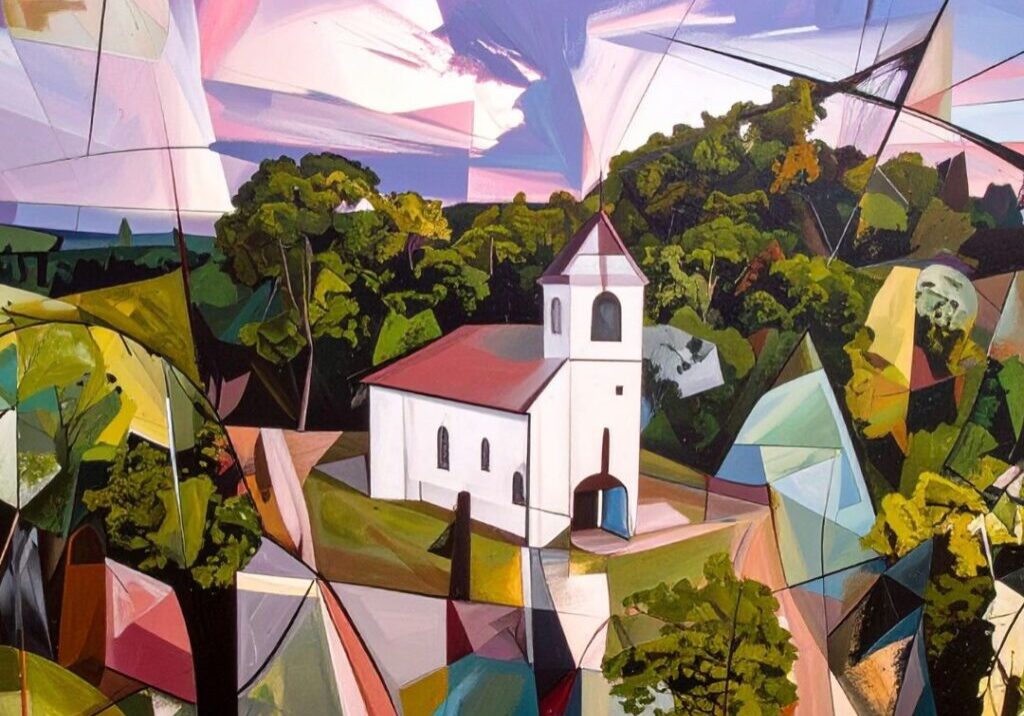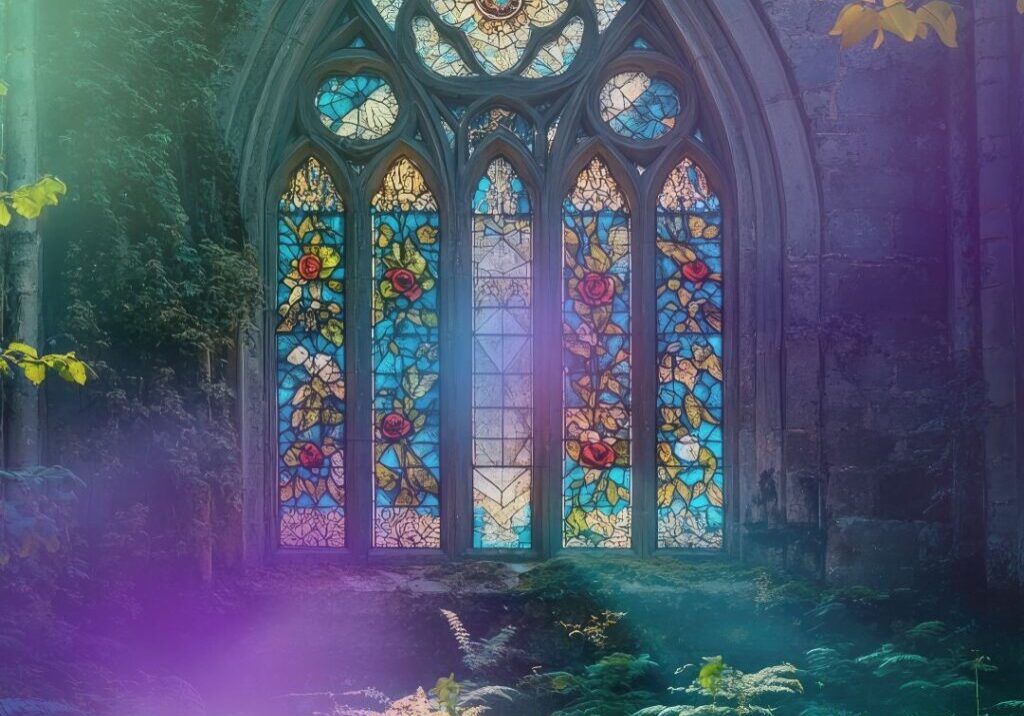Teilhard For Troubled Times – Part 3
Over recent weeks we have been posting a three-part blog series by Cynthia Bourgeault on the topic of “Teilhard for Troubled Times.” Here is the third and final installment. To read earlier posts go here: Part 1, Part 2.
Part 3 – The Living Reality of Omega
The third and most powerful wellspring of hope that Teilhard has to offer us—for those with “eyes to see and hearts to hear”—is the assurance that this slow toiling of the planet toward Omega is not merely some hypothetical, futuristic theory. Omega is neither abstract nor hypothetical; it is already present, actively suffusing and permeating the earth with its telluric energy. “I probably would never have dared to consider or form the rational hypothesis of it,” Teilhard writes in The Human Phenomenon, “if I had not already found in my consciousness as a believer not only the speculative model for it, but its living reality.” (HP, 211).
That “living reality,” is of course, the radiant heart of Christ, which Teilhard first met as a child and which continued to grow in him throughout his life as a palpably real and personal presence. Not only his own heart but the entire planet, were increasingly enfolded within the immediately experiential realm of “the Christic.”
There are those, I realize, for whom this aspect of Teilhard is uncomfortable. Many contemporary Teilhardian scholars—indeed, some of the most prominent among them—see as their goal the necessary “secularization” of Teilhard, extrapolating from his grand mystical synthesis the elements that will stand on their own as hard evolutionary science. Teilhard himself does not discourage this demarcation (he set up The Human Phenomenon so that his explicit comments about “The Christian  Phenomenon” are confined to the epilogue), and in light of the rigid and frozen dogmatism that is so often mistaken for “faith” in the popular estimation, demarcation is perhaps a necessary starting point. But I am personally convinced that in the long term it does no service to the ultimate impact of Teilhard’s vision; the vision’s coherence is weakened and its real sources of validation are obscured. In the grand tapestry of Teilhardian seeing, the warp of science and the weft of mysticism are inextricably intertwined. And it is just here, in fact, that Teilhard’s greatest gift to our own troubled times may lie waiting to be tapped.
Phenomenon” are confined to the epilogue), and in light of the rigid and frozen dogmatism that is so often mistaken for “faith” in the popular estimation, demarcation is perhaps a necessary starting point. But I am personally convinced that in the long term it does no service to the ultimate impact of Teilhard’s vision; the vision’s coherence is weakened and its real sources of validation are obscured. In the grand tapestry of Teilhardian seeing, the warp of science and the weft of mysticism are inextricably intertwined. And it is just here, in fact, that Teilhard’s greatest gift to our own troubled times may lie waiting to be tapped.
To the very end of his life, Teilhard kept on his writing desk an icon of the radiant heart of Christ. I have a copy of that icon on my own writing desk right now, and I am constantly surprised by how its quiet presence continues to call me up short. From the center of Christ’s chest the energy pulsates out in radiant waves, serenely carrying the world toward its consummation in Omega.
It was Teilhard’s felt-sense conviction of the presence of Christ already at work in “the stuff of the universe,” directing the course of evolution from within its very planetary marrow, that allowed him over a lifetime of otherwise unbearable diminishments to “stay the course,” bearing untold personal suffering for the sake of world that was already luminously inhabited by Christ; in fact, his very body. In my earlier blog I quoted from Teilhard’s searing meditation on the indifference and uncertainty of this world:
Ah, you know it yourself, Lord, through having borne the anguish of it as a man: on certain days the world seems a terrifying thing: huge, blind, and brutal. It buffets us about, drags us along, and kills us with complete indifference. Heroically, it may truly be said, man has contrived to create a more or less habitable zone of light and warmth in the midst of the cold, dark waters—a zone where people have eyes to see, hands to help, and hearts to love. But how precarious that habitation is! At any moment the vast and horrible thing may break in through the cracks—the thing we try hard to forget is always there, separated from us by a flimsy partition: fire, pestilence, storms, earthquakes. Or the unleashing of dark moral forces—these callously sweep away in one moment what we have laboriously built up and beautified with all our intelligence and all our love.
That is merely the first paragraph, however. In the second he offers his response—quintessentially Teilhardian—as he takes refuge in that intimate, pan-eucharistic presence of Christ, sensed through the eyes of faith:
Since my dignity as a man, O God, forbids me to close my eyes to this—like an animal or a child—that I may not succumb to the temptation to curse the universe and him who made it, teach me to adore it by seeing you concealed within it. O Lord, repeat to me the great liberating words, the words which at once reveal and operate: Hoc est corpus meum [this is my body]. In truth, the huge and dark thing, the phantom, the storm—if we want it to be so, is you! Ego sum, nolite timere (“It is I; do not be afraid.”] The things in our life that terrify us, the things which threw you yourself into agony in the garden, are, ultimately, only the species or appearance, the matter of one and the same sacrament.
For Teilhard, faith is not a matter of assent to a rationally derived set of doctrines and principles. It is first and foremost an action—an “operative” as he calls it—which is set in motion when one steps up to the plate and looks squarely in the face of reversal and evil through the radiance of that experienced Christic reality. My own spiritual teacher, the monastic hermit Brother Rafe, called this stance a “wager:” if the premise is true, you will live it into action. Rather than trying to do faith from the “top down,” by first convincing yourself of the logical plausibility of the argument in question, begin from the “bottom up,” by acting in alignment with it, and see what happens next!
There is a certain “Heisenberg” quality at work in all this, Teilhard Insinuates in his brilliant reflection on faith in The Divine Milieu (though of course, without invoking Heisenberg’s celebrated uncertainty principle directly). The quality of our presence does indeed impact the overall energetic field, with the results measured not so much in the sphere of outcome as in the overall “quickening” (he calls it “sur-animation”) of the relational field itself. Events are not necessarily transformed, but meaning is transformed. When subjected to the softening and harmonizing energy of faith, the hard edges of physical reality soften, become more supple, come into responsivity and coherence: “Chance is seen to be order, success assumes incorruptible plenitude, suffering becomes a caress of God.” (DM, 111)
“But if we hesitate,” he continues, “the rock remains dry, the sky dark, the waters treacherous and shifting—or in other words, the universe continues to appear indifferent, disconnected, and unresponsive —“and we may hear the voice of the Master, faced with our bungled lives: ‘O men of little faith, why have you doubted…?’ ”
It is the universal Christic presence—already seeded into the universe through the incarnation, catalyzed in the Paschal Mystery, and personally activated through faith—that sets up the feedback loop whereby even in the midst of overwhelming oppositionality and despair, we can still set our sights on and draw sustaining energy from that pole star of Christ-Omega—“in quo omnnia constant,” as Teilhard’s most cherished scriptural citation would have it: “in whom all things hold together.”
Perhaps this is what Teilhard means by “harnessing the energy of love.” In our own times, it is surely our best shot—perhaps our only shot—for doing something that does not merely compound the darkness. Teilhard’s conviction that faith is not something that we have but something that we do is perhaps the best antidote possible to the despair and distrust that paralyze so much of our post-modern moral resolve. It is a call to step out of the boat onto the ocean of love and discover—all our fear and skepticism to the contrary—that the water really does hold us up.
 View print-friendly version
View print-friendly version
2 Comments
Related Posts

Beyond Violence: The Path Through Grief to Spiritual Evolution
The recent shooting at Annunciation School in Minneapolis continues to haunt our collective consciousness. While the news cycle moves forward—with yet more senseless acts of political violence—the Annunication tragedy leaves…


Cynthia, thank you for this latest series on Teilhard. You do more good than you know with your graceful and findable teaching which continues to expand Teilhard for our times, contributing to ever-deepening Christconsciousness. This is where I want to live, and your generous contributions make it more possible.
Thanks for this encouraging message. I really like the idea that faith is not something we have but something we do. It is great that I don’t have to have everything figured out. I hope to ‘step out of the boat’!